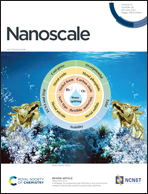Optimization of plasmonic metal structures for improving the hydrogen production efficiency of metal–organic frameworks†
Abstract
The introduction of plasmonic metals of gold (Au) nanoparticles onto metal–organic frameworks (MOFs) has been testified as an efficient approach to boost the H2 evolution ability because the excited Au particles can generate hot electrons that can then be injected into MOFs to inhibit the recombination of charges. Generally, Au particles possess two modes of polarization, which are transverse and longitudinal polarizations. However, which of the two modes is more efficient remains unclear and is yet to be disclosed. Herein, we report a strategy of finely controlling the transverse and longitudinal polarizations by gradually reducing the length, without changing the width of Au rods, and then combining with MOF Pt@MIL-125 to construct Pt@MIL-125/Au Schottky junctions, for investigating the polarization mode effects. The results indicate that with the reduction in the length of Au rods from 67 nm to 38 nm, the transverse polarization will be increased, which can lead to a significant enhancement in the electron–hole separation efficiency and H2 generation activity. When Au is in spherical shape, the transverse polarization effect reaches the highest level, thereby achieving the highest H2 production rate of 265.1 μmol g−1 h, which is 1.6 times more than that of 67 nm Au rods. The enhancement can be attributed to the significant accelerated electron transfer rate induced by transverse polarization and evidenced by ESR analysis. The results indicate that the transverse polarization is more efficient for hot electron injection and highlight that the Au sphere is a more appropriate candidate for producing the maximum SPR effect during photocatalysis.



 Please wait while we load your content...
Please wait while we load your content...